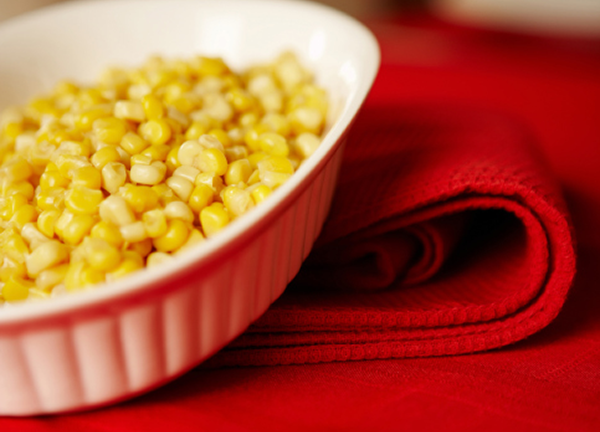Heart Health – The Dangers of Soda
My weakness is caffeine-free Diet Coke. For me, soda and popcorn go hand-in-hand. Well, even though I am drinking diet I have to remember I am not sitting pretty. Soda affects tooth decay, tooth discoloration, and for those that do not choose diet, weight gain.
Any drink that is carbonated has a low pH level. What you ask? Let me explain. The process of carbonation adds carbon dioxide and results in the formation of carbonic acid. This acid lowers the pH of a beverage. A pH of 1 is acidic and 7 is neutral. Battery acid has a pH of 1; water has a pH of 7. The pH of Pepsi is 2.49, Coke is 2.63, and Mountain Dew is 3.22. The acid in soda can damage tooth enamel in just 20 minutes. Think about how you usually drink your soda. Do you drink a 12 oz. can in 5-10 minutes or are you sipping on it over a period of an hour or so? You can help combat the effects of carbonic acid by drinking your soda in less than 20 minutes and rinsing your mouth with water after the fact. Saliva also helps neutralize the acid. Don’t forget to protect your children’s teeth! Children are even more susceptible to tooth erosion because their tooth enamel is not fully developed.
Habitual soda drinkers are adding layers of sugar, which turn to layers of plaque on their teeth. This plaque then absorbs stains from food products. This is how dark colored sodas lead to tooth discoloration. Bye, bye pearly whites!
Weight Gain
A 12 oz. can of regular soda contains about 150 calories. If you drink one can everyday you consume 4200 soda calories each month and 50,400 calories each year. This is equal to an extra 14 ½ pounds of body weight. Most people do not limit themselves to just 12 oz. a day. . . .one 20 oz bottle of regular soda daily would be an additional 26 pounds each year.
So, as you kick back and enjoy that acidic, staining, waist expanding can of soda, maybe you should think about splurging on a fancy bottle so you can switch it up and enjoy some refreshing water once in awhile instead!
Tired of burning hard earned cash on fitness gadgets you don’t use? End the vicious "cycle" now! Get your FREE report: "Stop Wasting Money – Take Control of Your Health" at
https://www.lisanelsonrd.com.
Lose Weight: Best Way to Lose Weight
If you are overweight and dealing with heart health concerns, you know weight loss with significantly improve your heart health. So, you need to find a way to successfully lose the weight and keep it off.
Here are tips for success:
Adequate Calories
Don’t cut your calories too low. Never go below 1200 calories and for some people the minimum is higher. Consuming too few calories drops you right into “starvation” (as far as your body is concerned), your metabolism drops, and weight loss grinds to halt. Also, drastic calorie cuts not only result in fat loss, but you lose muscle as well.
Realistic Goals
Set realistic goals. You may have a dream goal of shedding 40 pounds, but start with a smaller, achievable goal. Many studies show significant health benefits from shedding just 10% of your body weight.
Healthy Rate of Weight Loss
Plan for a healthy rate of weight loss. Aim to lose 1-2 pounds per week. Gradual, steady weight loss ensures you lose fat, not muscle.
Long-term Plan
Think long-term. Going on a diet is not the best way to lose weight. This is because the term diet generally implies a beginning and an end. If you want to successfully lose weight it requires permanent lifestyle and food choice changes. Changes you can and will stick with for life.
Steady Support
Surround yourself with a steady support system. By this I don’t only mean a spouse that supports you spending an hour at the gym after work or planning active family events. I also mean surrounding yourself with friends who are living the healthy life you want. I’m not implying you need to kick friends and family who are a negative influence to the curb, but look for ways you can gain friends that are living a healthy lifestyle. This will dramatically increase your success.
All the best,
Lisa Nelson RD
Be Heart Healthy and Lose Weight
Lower Cholesterol – Is grapefruit juice safe with medications, such as Lipitor?
 Here’s another question I asked Dr. Cynthia Shelby-Lane and her answer.
Here’s another question I asked Dr. Cynthia Shelby-Lane and her answer.
Lisa Nelson RD: Is it safe for individuals taking medication for heart disease, such as Lipitor, to eat grapefruit or drink grapefruit juice?
Dr. Shelby-Lane: I am including information that may help answer your question about grapefruit and a variety of nutritionals that affect statin drugs for the lowering of cholesterol.
Zocor (Simvastatin), for example, is a Statin drug, used to lower high cholesterol levels, and also known as HMG-CoA reductase inhibitor. Zocor may affect the absorption or utilization of vitamins E and coenzyme Q10. Tests showed the average concentration of coenzyme Q10 in blood plasma decreased by approximately 50% after statins were used for 30 days. Supplementation is considered beneficial.
Grapefruit and grapefruit juice may increase the effects of HMG-CoA reductase inhibitors and should not be consumed at the same time. It is suggested that these medications be taken with water. Grapefruit contains substances that may inhibit the body’s ability to break down statin drugs increasing the toxicity of the drug. Muscle pain, tenderness, or muscle weakness may be a result. If you begin to notice these symptoms, contact your doctor.
Niacin is the form of vitamin B3 used to lower cholesterol. Large amounts of niacin taken with a statin drug may cause serious muscle disorders (myopathy). Reasonable levels of niacin combined with statin drugs have been shown to enhance the cholesterol lowering effect. For proper dosage, consult your physician before taking niacin.
Pomegranate juice has been shown to inhibit the same enzyme inhibited by grapefruit juice. This may cause reactions similar to grapefruit juice when it is used with statin drug treatments.
A study of 37 people with high cholesterol treated with diet and statin drugs found vitamin A increased in the blood over two years of therapy. People taking statin drugs and vitamin A supplements should have blood levels of vitamin A monitored.
Magnesium and aluminum containing antacids were reported to interfere with statin drug absorption. To avoid this interaction, take statin drugs two hours before or after any aluminum/magnesium containing antacids. Some magnesium supplements such as magnesium hydroxide are also antacids.
It should be noted that doctors often recommend supplementing with 100 mg of coenzyme Q10 per day for maintaining healthy levels. However, those on statin drugs may have a greater need for a higher dose. It further should be noted that the symptoms associated with the combination of grapefruit juice and statin drugs (muscle weakness and discomfort) are commonly reported as symptoms associated with CoQ10 depletions. Supplementation with coenzyme Q10 is strongly recommended.
The herbs Artichoke plant, Garlic and Plantain may decrease blood cholesterol levels, and therefore enhance the effects of Zocor. Consult with your pharmacist or physician before taking them.
All the best,
Lisa Nelson RD
Be Heart Healthy and Lose Weight
5 Heart Healthy Foods to Add to Your Diet Today
Here are five foods to include in your diet to promote heart health.
1. Banana – Good source of potassium to promote a lower blood pressure.
2. Fish – Contains omega 3’s to prevent arterial plaque rupture.
3. Olive oil – Contains heart healthy monounsaturated fat to reduce the risk or coronary heart disease.
4. Garlic – Contains allicin to raise HDL, lower LDL, lower homocysteine, and lower blood pressure.
5. Walnuts – Rich is essential fatty acids, healthy protein, fiber, and phytosterols (compounds to decrease absorption of dietary cholesterol).
February is American Heart Month. In recognition of American Heart Month you can access Heart Health Made Easy at a 25% savings. Learn more about this take action guide to lower cholesterol and blood pressure at http://www.hearthealthmadeeasy.com.
All the best,
Lisa Nelson RD
Be Heart Healthy and Lose Weight
Nutritional Value of Corn and Heart Health
 I recently listened to an interesting conversation related to corn. It was more a debate on corns’ status as a vegetable, lack of nutritional value of corn, and link to health problems (specifically diabetes and obesity). It was proposed that corn should be banned from production. The debate went on to suggest a comparison between corn and tobacco production and their similar impact on our society. Now, I am hoping some of this was argument just for arguments sake. What did this little yellow kernel ever do? I am stepping up in its’ defense.
I recently listened to an interesting conversation related to corn. It was more a debate on corns’ status as a vegetable, lack of nutritional value of corn, and link to health problems (specifically diabetes and obesity). It was proposed that corn should be banned from production. The debate went on to suggest a comparison between corn and tobacco production and their similar impact on our society. Now, I am hoping some of this was argument just for arguments sake. What did this little yellow kernel ever do? I am stepping up in its’ defense.
If you want to delve into botany, you could argue that corn is a grain; but I am not going to go into that explanation. In our society, corn is eaten like a vegetable. Granted it is a starchy vegetable, but a vegetable nonetheless. As far as nutritional value, ½ cup of frozen corn contributes some Vitamin A and potassium, 2 g of dietary fiber, 2.5 g of protein, only 1.5 g of sugar and less than 0.5 g of fat. The nutritional value is not outstanding, but not terrible either.
Corn is a whole grain and includes resistant starch. Resistant starches are popping up as a hot topic related to weight loss. A resistant starch is a type of fiber that resists digestion and passes through the small intestine to the large intestine mostly intact. In the large intestine it ferments and produces a fatty acid (bytyrate) that reduces toxins and helps protect against digestive diseases. Resistant starches boost immunity, improve blood sugar control, and increase satiety (a plus for individuals trying to lose weight).
Cornmeal, Corn starch, Popcorn, High Fructose Corn Syrup
Corn is used in the production of many products. I am going to briefly cover just a couple – cornmeal, cornstarch, popcorn, and high fructose corn syrup – none of which are vegetables.
Cornmeal versus cornstarch is comparable to whole wheat flour versus white flour. Cornmeal includes the whole corn grain (bran, germ, and endosperm) while cornstarch is refined (bran and germ removed). Whole grain equals a good source of dietary fiber.
Popcorn is an excellent snack that is low calorie. Of course, you need to watch the added butter and salt. One cup of light popcorn equals ~15 calories and provides 5 g of dietary fiber!
High fructose corn syrup is a major ingredient in soda and numerous foods with a low nutritional value. To produce high fructose corn syrup, whole corn is refined to corn starch. This corn starch is then processed with enzymes to yield a glucose and fructose mixture, eventually resulting in the production of high fructose corn syrup. To say that high fructose corn syrup is corn is like saying Sunny Delight is orange juice.
Glycemic Index
The glycemic index is an oft times used rationale supporting the argument that corn is bad, based on how quickly corn raises blood sugar levels. It has been well-known for years that the glycemic index is not a reliable tool. If you were to base eating on the glycemic index, that would mean you sit down for your evening meal and dine on a cup of corn only. How likely is that? A typical meal includes a variety of foods, such as some meat and bread, along with corn. The protein, fiber, and other components of these various foods, negate the glycemic index value established for corn alone.
Portion Control
I sincerely doubt someone is overweight because they couldn’t put down the corn. Corn does provide ~80 calories per half cup, so as with everything else, you need to practice portion control and watch what you add. A tablespoon of butter added to a half cup of corn increases the calorie count to ~180 calories.
Bottom Line:
If you like corn, eat it. You do receive a nutritious vegetable, but watch the amount. Definitely NOT the root of all evil!
All the best,
Lisa Nelson RD
Be Heart Healthy and Lose Weight
Heart Disease and Fibromyalgia – Is there a link?
Here’s another question I asked Dr. Cynthia Shelby-Lane and her answer.
Lisa Nelson RD: Do you feel there is a link between heart disease and fibromyalgia?
Dr. Shelby-Lane: Fibromyalgia symptoms were akin to the symptoms of several “functional” disorders (i.e., medical conditions that affect bodily function via causes that are poorly understood) including recurrent non-heart-related chest pain, heartburn, heart palpitations and irritable bowel syndrome. However, a number of studies since have detected evidence of abnormalities in the internal organs of many fibromyalgia patients, including heart valve problems, malfunction of the muscles that move food to the stomach, and weakened lung function. These studies suggest that the abnormalities likely are symptoms of a larger disease, not illnesses by themselves.
Because of weakened respiratory muscles an individual finds it hard to breathe and the supply of oxygen to heart is decreased resulting in the above symptoms. Similar is the case with neck pain, due to weakened muscles.
Fibromyalgia (FM) is a recently recognized disorder rheumatologists and practitioners see quite often, especially in women 20 to 50 years old. It is characterized by widespread, chronic musculoskeletal pain, tenderness, fatigue and stiffness affecting muscles, tendons, ligaments and connective tissues with loss of sleep, depression, and shortness of breath. It is a poorly understood condition and there appears to be no universal cause and no single treatment that is effective for every person. Diagnosis of fibromyalgia is based on the tenderness of specific anatomical sites (at least 11 of 18 points) and pain in all four quadrants of the body that has lasted for 3-6 months or longer. It mostly affects the neck, shoulders, lower back, chest and/or thighs. Fibromyalgia patients meet many of the diagnostic criteria for chronic fatigue syndrome. Three to six million people are affected by fibromyalgia.
Possible Causes or Contributing Factors of Fatigue & Fibromyalgia
The cause of fibromyalgia is not known. Patients experience pain in response to stimuli that are normally not perceived as painful. Researchers have found elevated levels of a nerve chemical signal, called substance P, and nerve growth factor in the spinal fluid of fibromyalgia patients. The brain nerve chemical serotonin is also relatively low in patients with fibromyalgia. Studies of pain in fibromyalgia have suggested that the central nervous system (brain) may be somehow supersensitive. Scientists note that there seems to be a diffuse disturbance of pain perception in patients with fibromyalgia.
Also, patients with fibromyalgia have impaired non-Rapid-Eye-Movement, or non-REM, sleep phase (which likely explains the common feature of waking up fatigued and unrefreshed in these patients). The onset of fibromyalgia has been associated with psychological distress, trauma, and infection.
Fibromyalgia can occur in the presence of other conditions such as rheumatoid arthritis, osteoarthritis and hypothyroidism.
Nutritional therapies that help with fibromyalgia are D-ribose, L carnitine, magnesium, coenzyme Q 10, glutamine, fixated nitrogen, SAMe (optimal dosages vary for all supplements) and detoxification, but detection and correction of the underlying problem is the first course of action. This should also include hormone evaluation for adrenal and thyroid problems.
All the best,
Lisa Nelson RD
Be Heart Healthy and Lose Weight



